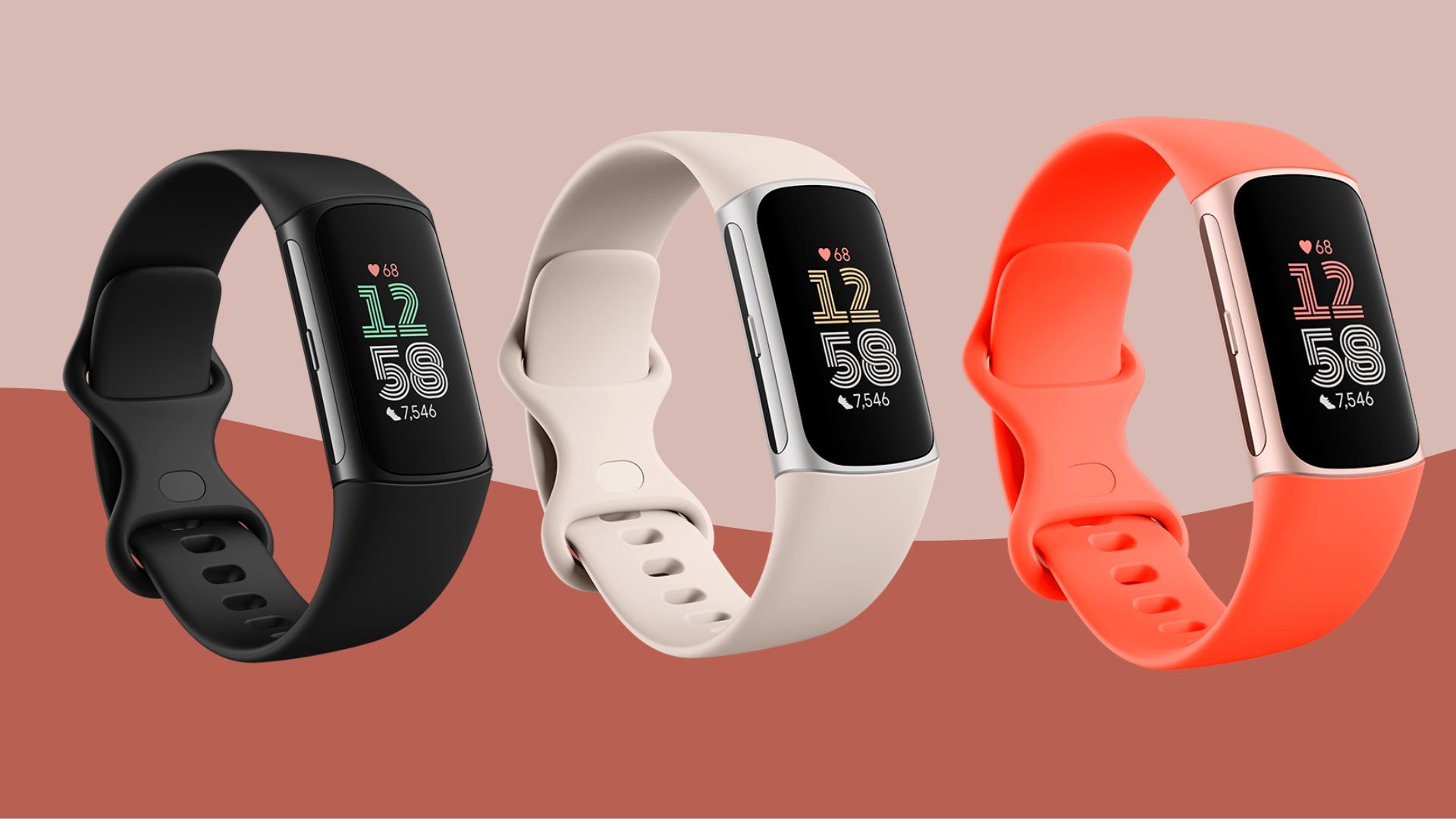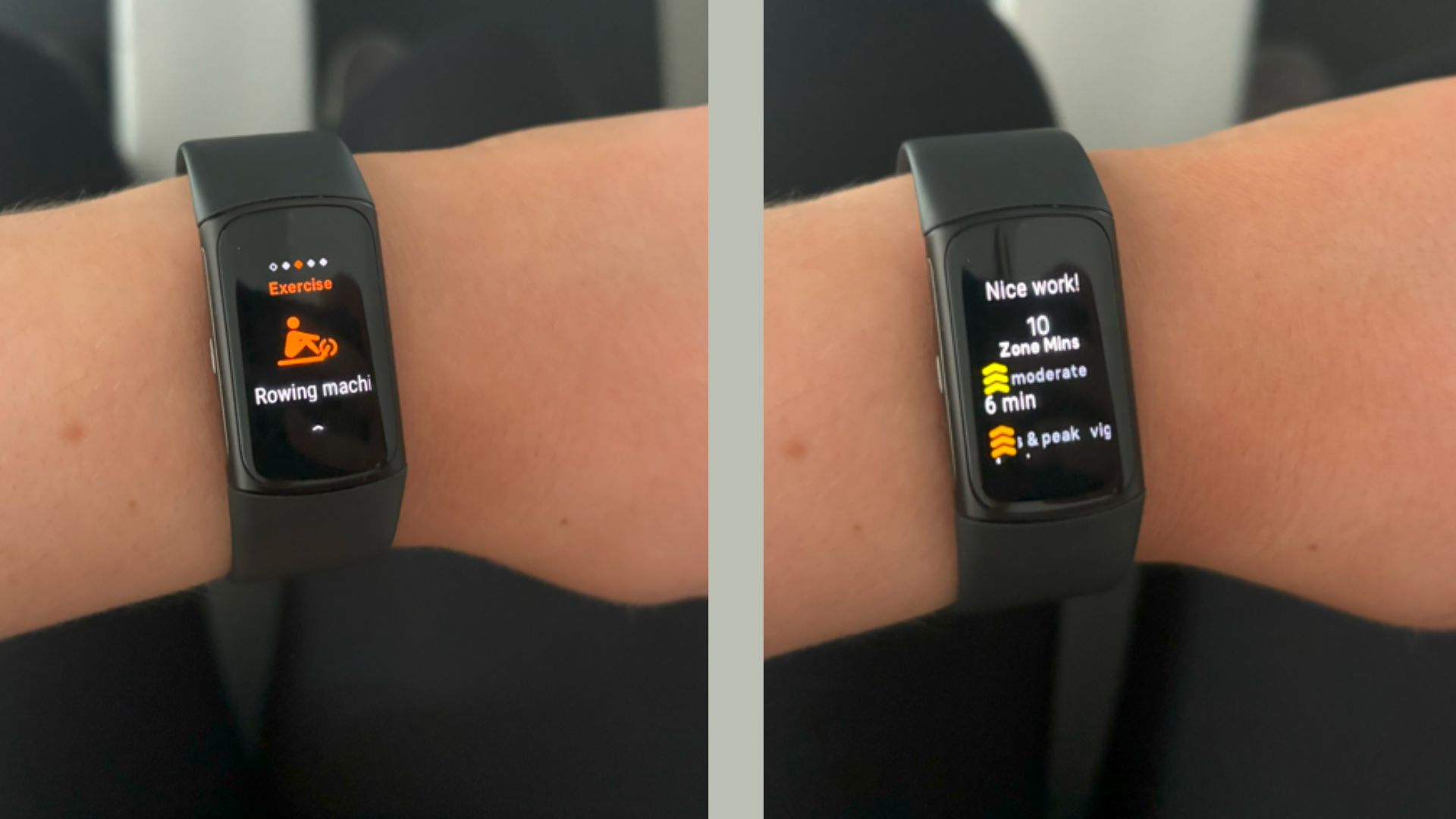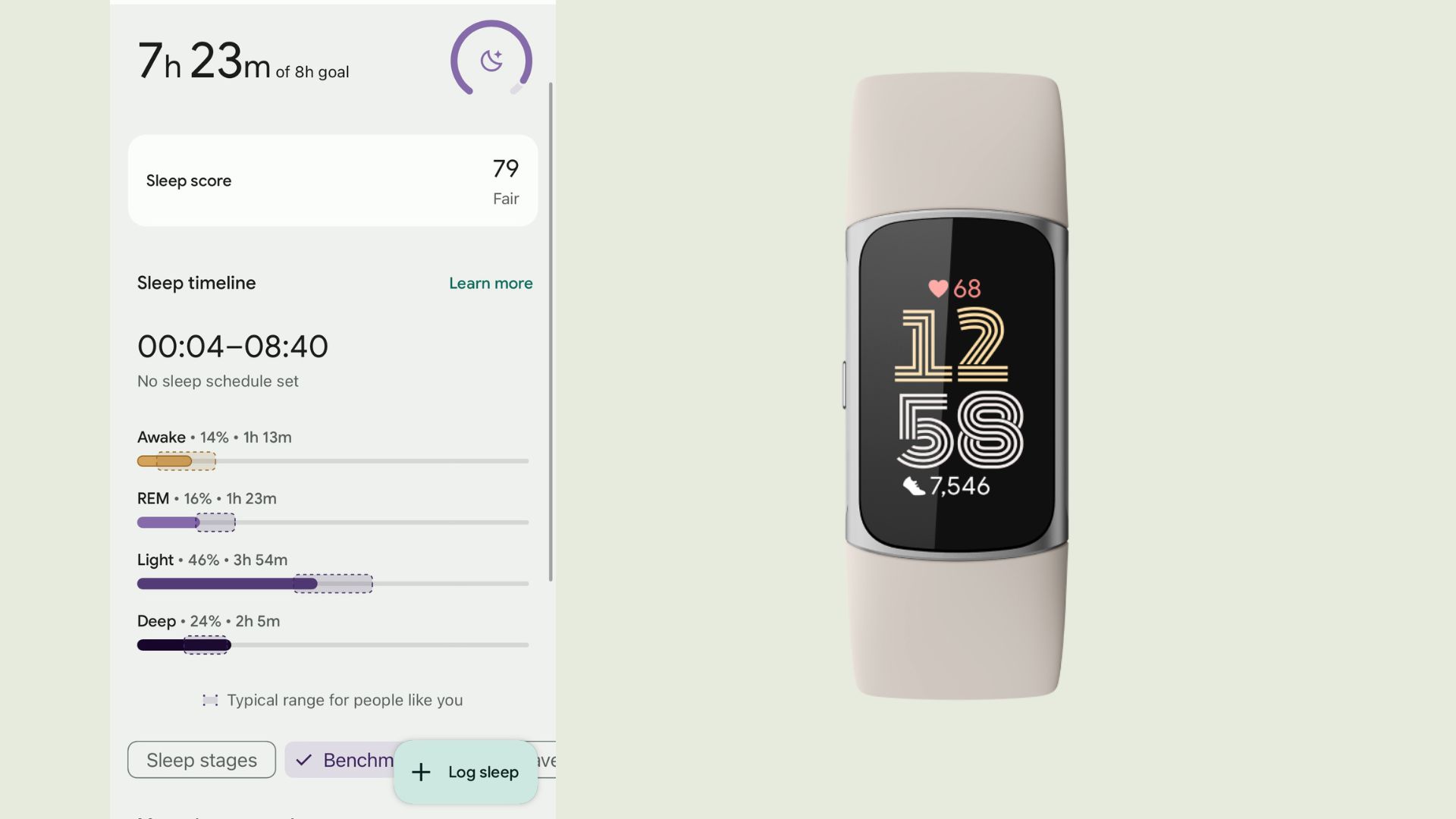
The Fitbit Charge 6 is the latest release from Fitbit and the first to hit the shelves since the recent Google takeover. With the tech mega-giant now behind the wheel, I was curious to see what has changed, if anything.
It turns out, a lot has changed. The Fitbit Charge 6 has quickly become one of the best fitness trackers after the brand's announcement that this model offers 60% better heart rate tracking than the previous Charge 5 model. As one of the newest Fitbits on the market, updates are expected - but this is a huge improvement that impacts everything from safety features to predicted calorie burn. So, what else is new?
I put the Fitbit Charge 6 to the test to see if it’s really worth the update. As a health and wellbeing journalist, I’ve tested many of the best Fitbits over the years, and each time I weigh up up overall performance, from activity tracking to sleep monitoring, while also assessing how fitness wearables can give us a greater insight into our overall health and wellbeing, and support stress management in this fast-paced world.
Fitbit Charge 6 review
Fitbit Charge 6: An overview
The Fitbit Charge 6 is the newest Fitbit watch to be released and the latest generation of the Charge model, complete with top-class fitness tracking abilities, as well as sleep analysis and smartwatch features. An excellent tracker across the board - from exercise and sleep insights to heart rate monitoring.
While the Charge 6 looks and functions similarly to the Fitbit Charge 5, it’s had a few updates - including improved heart rate tracking accuracy, more on-screen workout categories, and Bluetooth connectivity to link the heart rate monitor with other exercise equipment, such as a Peloton bike. There’s also a new pressure plate that acts like a button with a quick tap, making navigation easier than ever.
Fitbit Charge 6: Specifications
- RRP: £139.99
- Size: 36.73mm x 23.09mm x 11.20mm
- Weight: 37.6g
- Material: Aluminium, glass and resin with a silicone band
- In-built GPS: Yes
- Battery life: Up to 7 days
- Waterproof: Swimproof up to 50m
Design of the Fitbit Charge 6
Sleek and easy-to-use, the Fitbit Charge 6 is one of the most compact fitness trackers around. It’s lightweight with a thin silicone band that sits comfortably on the wrist. Sometimes, I find that fitness trackers can irritate my sensitive skin and leave a red mark - but I was delighted that this wasn’t the case with the Fitbit Charge 6.
There haven't been any major updates to the Fitbit design compared to other types of Fitbit tracker, like the Inspire 3 or Fitbit Luxe, except for the addition of a pressure plate on the side that acts like a button and makes it easier (and quicker) to get back to the home screen. Otherwise, it’s a touch-screen tracker with the same navigation as previous models: swipe up to view daily stats, from step count to calories burned, swipe down to access settings and other apps like Google Wallet, and swipe left or right to navigate between features such as workouts, alarms, YouTube Music and more. The ‘wake’ function means you can wake-up the tracker’s screen with a flick of the wrist, which is handy when you want to glance at your stats during a workout or check the time.
What's it like to use the Fitbit Charge 6?
Like all Fitbit devices, the Charge 6 is very user-friendly and easy to navigate. From the home screen on the device, you can swipe left and right to find your essential features - notifications, workout modes, alarms, and more. You can swipe down to find your contactless payment options and settings menu, and swipe up to see your daily stats.
The Fitbit Charge 6 is connected to the Fitbit app - here you can see all your insights in more detail. From your sleep score and the types of sleep you had during the night to an overview of your recent exercise sessions.
Even if tech is not your forte, you’ll find the Fitbit is one of the easiest fitness trackers to use. The device and the app work seamlessly together with all on your essential on wrist and the rest there to view when you're ready. Although you don't need to have Fitbit Premium (at £7.99 per month after a six-month free trial period) to use the device, it's worth weighing up Fitbit Premium vs free if you have health goals you want to meet. A subscription offers follow-along workouts from the likes of Les Mills, recipes, mediation tracks, and even deeper insights into your health and wellbeing - especially your sleep and stress levels.
Alongside the features you would find on your average fitness tracker, the Fitbit Charge 6 also has smartwatch-like abilities, putting this device in line with the latest Apple Watch SE and more advanced fitness trackers. Although, it's still worth weighing up Fitbit vs Apple Watch before you make a decision. You can receive call and text notifications if your phone is nearby, connect to Google Wallet so you can make purchases on-the-go, use Google Maps with an interactive view while you’re out and about and connect to YouTube music to control your workout tunes from your wrist. The only downside, I found, is if you’re an Apple Music or Spotify user - you won’t be able to connect it to your tracker.
Fitness tracking on the Fitbit Charge 6
When it comes to fitness and activity tracking, the Fitbit Charge 6 doesn't disappoint. Not only is it one of the easier fitness trackers to use, but it’s thought to be one of the most accurate too. While it’s hard to say definitively, compared to other brands I’ve tested, it appears to accurately track my step count and workouts, and how these will impact my day based on, for example, calories burned and Zone minutes earned. Considering how many fitness trackers I've tested where this is not the case, it's a relief.
For those wanting to improve their fitness levels, the Charge 6 is a great device. The model has an impressive 40 activities on the watch face so you can easily swipe through, find your activity, and start your workout within seconds. You can also now connect your device to workout equipment such as Peloton, treadmill, or iFit, and monitor your heart rate on the big screen in real time as you run, cycle or row. Your data will then appear in the Fitbit app for you to review as normal.
The World Health Organisation (WHO) and the NHS recommend banking at least 150 minutes of moderate exercise a week, and the Fitbit Charge 6 can help you to meet this target through Active Zone Minutes - these track how much time you spend in fat burn, cardio and peak zones. For one minute in the fat burn zone, you’ll earn one Active Zone Minute and for one minute in the cardio or peak zones, you’ll earn two Active Zone Minutes. These zones are personalised and based on your own cardiovascular fitness and age. This is a feature I really like about Fitbit because it's so personalised - there’s no one-size-fits all approach to movement.
As I did a rowing machine workout, my tracker buzzed to tell me when I’d entered a new zone: one buzz for the fat burn zone, two for the cardio zone, and once you entered the peak zone the tracker will buzz three times. Gamifying movement and workouts in this way I found spurred me on to meet my weekly targets - but it’s always important to listen to your body and what it needs.

Sleep tracking on the Fitbit Charge 6
While the Fitbit Charge 6 does an excellent job at tracking activity, it also analyses sleep and providing insights into how well you’re sleeping. By analysing the duration of your sleep and the sleep stages (including Deep and REM), it will determine a Sleep Score that indicates how well you are meeting your sleep needs each night. Fitbit was able to give me a benchmark that revealed how my sleep stages were measuring up against the typical range for users like me. However, having tested devices like the Oura Ring which really excel in this department, I would have liked more detailed insights and personalised recommendations from Fitbit on how to improve my sleep. If you're the same, it's a good idea to weigh up the Oura Ring vs Fitbit before buying.
If you are someone who just wants the sleep tracking basics - like how many hours you slept for and what that sleep looked like in terms of light, deep, and REM sleep, the Charge 6 is a great choice.

Health tracking on the Fitbit Charge 6
These days, ECG apps and SpO2 blood oxygen trackers are standard amongst fitness trackers. While they should never be used as a diagnostic tool, they give a good indication of your overall health and wellbeing. I was pleasantly surprised to find that the Fitbit Charge 6's sensors were just as good as the more expensive, premium devices I've tried in the past.
The ECG app means you can assess your heart rhythm for irregularities, and if anything is flagged you can then discuss with your doctor. I had a few connectivity issues between my tracker and smartphone, which is essential for this app, but once I got them sorted I was able to take my first reading by placing my thumb and index finger on either side of the tracker and holding still for 30 seconds. Similarly, I took an EDA Scan in the same way, this time holding still for three minutes. The scan looked at my EDA responses (aka tiny changes in the sweat level of my skin) which could tell me how I was reacting to stress and how relaxed my body was. Typically, the fewer EDA responses the calmer you are, and mine continued to fall as I went through the three minute test. While these features may not be essential for many people, they do put the Charge 6 up there with more expensive, premium fitness trackers.
There's also an SpO2 tracker that will tell you how much oxygen is in your blood. You can also track the usual metrics including your heart rate, resting heart rate, breathing rate and skin temperature. Plus, the menstrual cycle tracking function can help you find patterns in your cycle and estimate your ovulation window.
But for me, one of the most interesting insights from the Fitbit Charge 6 is the Stress Management Score. It gave me an insight into how my body was recovering from stress every day, which also encouraged me to reflect on how I was feeling and what I could do to create more downtime. There’s also a Readiness Score which takes into account your Sleep Score and previous day’s activity, to determine how ready your body is for a day of high activity or whether it needs more rest.
Of course, you should always listen to your body’s cues. If you feel tired and stressed, but your Fitbit is telling you that you’re ready for a day of high-energy activities, you should tune into what you really need and allow yourself to rest. The tracker won’t always get it right, but it provides insights and guidance to help you on your way.
Is the Fitbit Charge 6 worth it?
Yes, the Fitbit Charge 6 is one of the best Fitbits around. It’s a premium fitness tracker that comes with all the bells and whistles, but is much more affordable than some of the other luxury trackers on the market, such as the Oura Ring or the Apple Watch Series 9, ensuring you get bang for your buck.
Ultimately it will all come down to personal preference and what you want from a fitness tracker - but if activity tracking that encourages you to introduce more movement into your day, sleep analysis and insights into your overall health are on your list, the Charge 6 could be the fitness wearable for you.
When you buy the Fitbit Charge 6 via the Fitbit website, you’ll also get a six month premium subscription which then renews at £7.99 per month or £79.99 per year after this period. Although it’s an additional monthly cost, it’s well worth investing in to access more detailed sleep insights, guided workouts and meditation recordings, plus nutritious recipes and monthly wellness reports to help you discover health trends and set goals.







